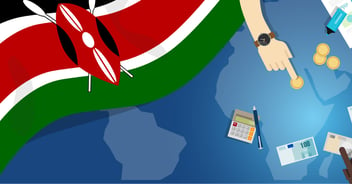

The population of New Zealand is less than 5 million people, which means, the economy is still growing and opening up to new opportunities. “Kiwi-style businesses” as they like to call it are usually small to medium-sized. With a boastful unemployment rate of less than 5%, New Zealand is one of the top places to work in the world. Their work culture is casual, and self-motivated with relaxed hierarchies.
The government is opening its gates to more businesses and is providing several infrastructural and monetary incentives to entrepreneurs. In 2018, New Zealand topped the World Bank Business Report for ease of doing business. In the same year, Forbes’ declared New Zealand as the Best Country for Business.
1. General Information
There are no restrictions on the size of an organization’s share capital, and residency restrictions on shareholders and company secretaries are also not required. Many offshore investors set up their business presence by acquiring an entity of New Zealand. Though you don’t need to be a registered entity to invest in the country, you need one to carry out business. These opportunities come with some regulations and guidelines.
2. Tax
The tax year for New Zealand is from April 1 to March 31. PAYE (pay-as-you-earn) scheme is a government-run system which ensures that taxes are automatically deducted from an employee’s income.
There are various tax codes depending upon the source of income, on the basis of which personal income tax rates range between 10.5% for low-income earners and 33% for high-income earners, with a marginal tax rate of 45% in case no declaration is provided. There is an additional deduction of an ACC Earners levy (1.39%) along with PAYE subject to a maximum earning of NZD 130,911 for the current tax year with few exceptions.
Every employee at the time of starting shall provide an IRD declaration form (IR 330/ IR330C) with their Inland Revenue Department (IRD) number, personal details, and tax code to their employer. Income tax includes income from self-employment, salary, and wages. It also includes overseas income, student allowances, benefits, assets and investments, and rental income.
Student loans availed by the employees are deducted from their salary and reported to the IRD through payday filing.
3. Social Security Contribution
The country’s Social Securities Act 1938 is historically important as it led to the first ever social security system in the world. However, employers and employees do not largely contribute to the social security scheme.
Aside from these, the New Zealand government introduced KiwiSaver scheme in 2007, which was meant as a voluntary savings plan to encourage individuals to save money, especially for their retirement. New Zealand residents, employed or not, could choose to regularly contribute either through employers (wherein employee contributions range from 3 to 10 percent of salary) or through scheme providers, but this is not a government guaranteed scheme. All employees are required to provide KiwiSaver declaration form to their employers when they start working.
4. Leave entitlement and pay-outs
All the leave entitlements and payouts are governed under the Holidays Act 2003 which is considered as the most complex law in New Zealand. It requires employers to adhere to many conditions. The prominent leaves covered under this Act are:
- Annual Leave
- FBAPS (Family Violence, Bereavement, Alternate, Public Holiday and Sick) Leave
Some of the leaves include:
Annual and Public Holiday leave: An employee is entitled to a holiday of 4 weeks in a year. However, it is up to the employer and employee to extend it to 5 weeks or more. Also, there are 10 paid public holidays every year.
Sick leave: Any employee is entitled to 5 sick leaves per year. Of course, there is a period of work required to be eligible for sick leave. Sick leave entitlements are not pro-rated. Any employee, who has worked for 6 months, meeting the criteria even if it is part-time, is eligible for sick leave.
Bereavement leave: Depends upon the employee’s relationship to the deceased person. An employee is granted 3 days of leave for a close family member and 1 day for a friend’s passing away or someone they knew. This is based on how close they were to the deceased person, how much responsibility they have in making arrangements and the cultural responsibilities they have in relation to the death.
Maternity and Extended (unpaid) leave: Expectant mothers can take up to 26 weeks of maternity leave with an additional 26 weeks of extended leave. The same applies to paternity leave. Often known as parental leave, this has specific criteria employees must meet in order to qualify for it.
Pay-out rates: The Holiday Act, defines the pay-out rates for the leaves. Annual Leaves are paid out at Higher of Ordinary Weekly Pay (OWP) or Average Weekly Earnings (AWE). FBAPS leave are paid at Relevant Daily Pay (RDP), however if the same cannot be determined than the Act allows the pay-outs to happen at Average Daily Pay (ADP).
New Zealand also offers Domestic Violence leave. This is compulsory for employees who have faced domestic violence. There are many other leave entitlements offered to employees in New Zealand such as Alternative Holidays, Union leaves etc.
5. Payroll reporting and employee regulations
To safeguard the rights of the employees and the employers, New Zealand has some regulations:
Working hours: In New Zealand, the rules related to working hours are pretty flexible . Businesses limit themselves to 40-hours a week, wherein the business hours are usually between 8:30 a.m. and 5 p.m. However, in some industries, the employees sometimes work for 10-hours a day and four daysa week. Overall, they don’t go over 40 hours.
Payroll pay period: The employer may pay their employees salary either on weekly, fortnightly, monthly, or four-weekly basis.
Reporting: The pay day filing was made compulsory from April 01, 2019. This filing allows employers to directly submit the reporting obligations to the IRD from their payroll software. This reporting shall be within two days after every pay period. There were significant changes brought in pay day filing for tax year 2021 and onwards, to ease out reporting requirements for the employers.
6. Minimum Wage
New Zealand was the first country to implement a National Minimum Wage, all the way back in 1894. There is no requirement to work for a certain number of hours to qualify for minimum wage. All hours worked are counted. The minimum wage in New Zealand can be categorized into three categories based on the amount paid. The government has revised and increased the minimum wage, due to COVID-19, from April 2020:
• Adult Minimum Wage is currently $18.90 per hour
• Starting-Out Minimum Wage is $15.12 per hour
• Training Minimum Wage is $15.12 per hour
Payroll Options for Medium to Large Size Businesses
Cloud-based payroll solutions benefit medium to large enterprises by future-proofing their business, so that they can respond to the future events quickly. It helps businesses in making error-free calculations, ensuring data security, offering customer support system, facilitating payslip generation, helping in staying upto date with taxes and other regulations, and saving an ample amount of time and cost.
Conclusion
Just like the rest of the world, the country presents many nuances in the regulations, guidelines, rights, and laws when it comes to payroll. It also modifies its laws to keep them relevant and dynamic. Sometimes, it may become a difficult and time-consuming task for an employer to ensure adherence to all such regulations while offering flexibility. Herein, having a renowned multi-country payroll services provider will help you make this process easier and faster.
Also as discussed earlier, New Zealand is open to many offshore investments and is promoting new businesses now. Not only will the laws continue to evolve rapidly, but businesses that originate from other countries will have to manage more than one country’s payroll, which will prove to be a burden on the resources.
A global payroll services provider, like Ramco, will do more than just ensuring compliance. It will help you centralize your payroll operations, significantly reducing manual efforts due to automation, training time and investments. With the entire payroll process automated, enabling multi-country processes from a centralized hub, overall reduced costs, and built-in intelligence the users will have an engaging experience. Ramco’s award-winning global payroll solutions are currently deployed in 50+ countries.


